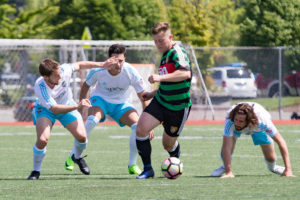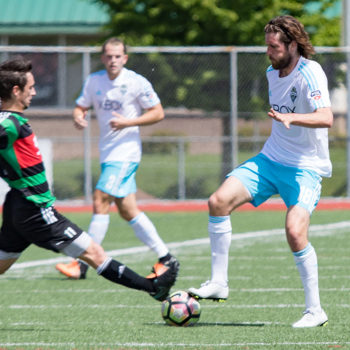
Five Mistakes a Soccer Player Can Make – Part 3
Part 3
They Don’t Set Their Intentions For Training
Most players just show up at training ready to work hard. They do their best to make sure they arrive on time and have all their gear. Most likely they are wearing the right shoes and have eaten well and hydrated before they arrive at the field. But here’s where the good stuff often comes to end for them at practice; players often assume their coaches will conduct a training session designed to help them individually improve as a player. They assume the responsibility for their improvement falls exclusively on the shoulders of their coach. In this way, the player is using an external, and non-controllable variable source of motivation (coach’s training session) in the hopes of fueling their improvements.

But what happens if you are a striker and the coach runs a purely defending practice? Or, what happens if you are a central mid wanting to work on playing to the weak side… and the coach runs a finishing practice? Or as another example, you need to work on improving your first touch but the coach runs a 1 vs 1 practice? The best way to make consistent improvements as a player is to create your own motivation and focus by pre-practice goal-setting rather than passing the responsibility for your growth as a player to your coach.
To get the most out of a practice, players have to set intentions for themselves that has positional specific elements and will drive their work on the field. Many times we talk about setting goals but soccer practices don’t usually keep stats so a traditional goal with measureable details is difficult to establish. Setting these skill and position specific intentions is way more effective for an individual rather than hoping for their coach will run the perfect session just for them. If we use the examples above when players want something out of a practice that isn’t obviously there to be had, goal-setting for these players might look like:
- The striker sets an intention to attack the front foot of a defender in his 1 vs 1 duels
- The midfield player works on finishing with the inside of her foot so that she is striking the ball like she would along pass
- The player who wants to work on 1st touch, stays after practice for 10 minutes and works to receive 40 balls out of the air
In this way, the work these players do has meaning for them, is an internal motivation, and is something over which they have control. A player’s development ultimately is that player’s own responsibility.

If you would like to find out which two effective mental training tools thrive uses with our clients to help players maximize their training time, email, text, or message me for either of the two mental training exercises on effective goal-setting for practice listed below:
- Intention-Setting for Practice
- Forget About Setting Goals the Old Way
Thanks for reading!
- Getting Your Intensity Level Right - March 17, 2025
- Building a Functional Resilience Plan is Vital to a Referee’s Success - February 18, 2025
- sport in a pandemic: Crisis or opportunity?Chapter 4 - December 4, 2020


